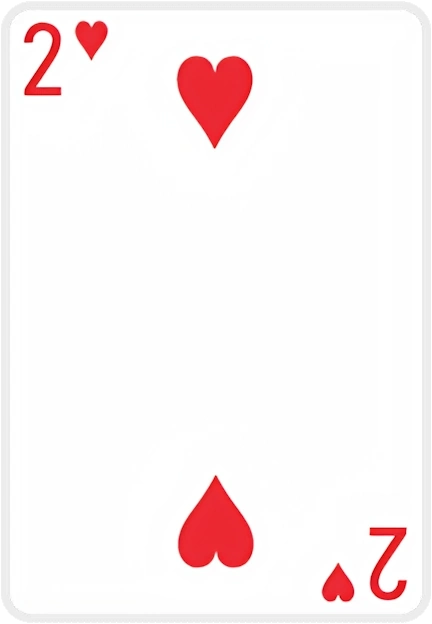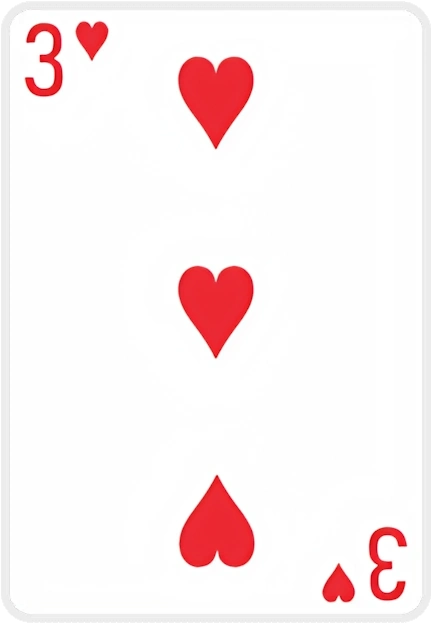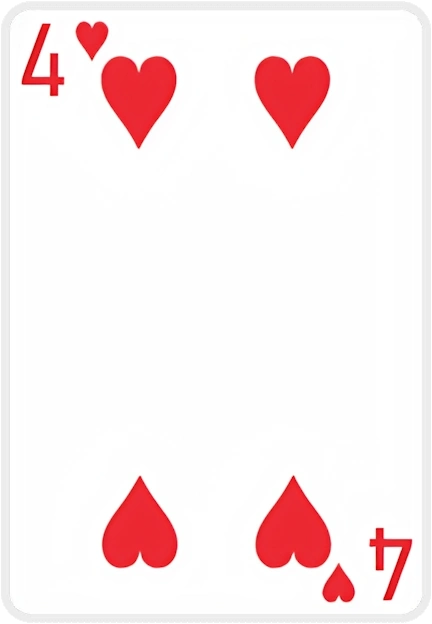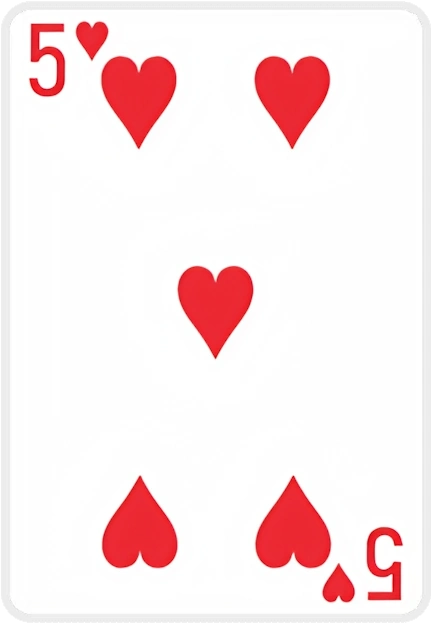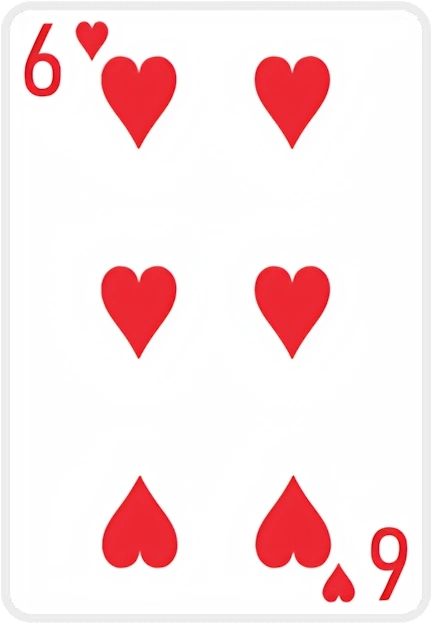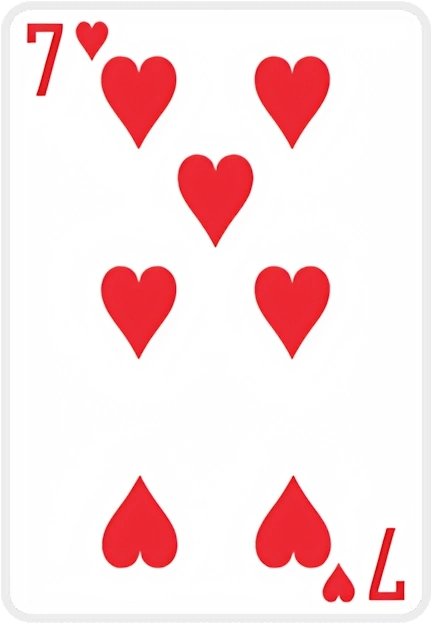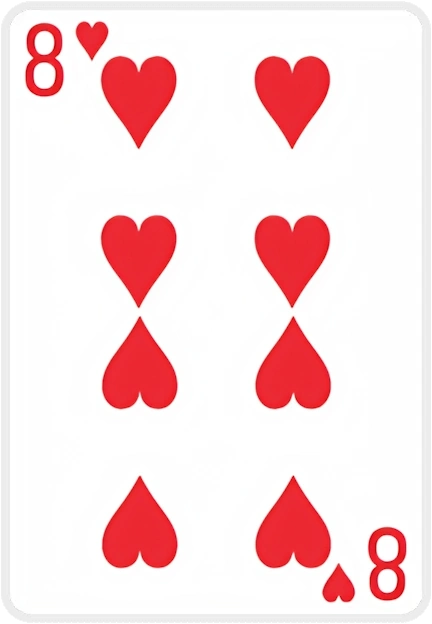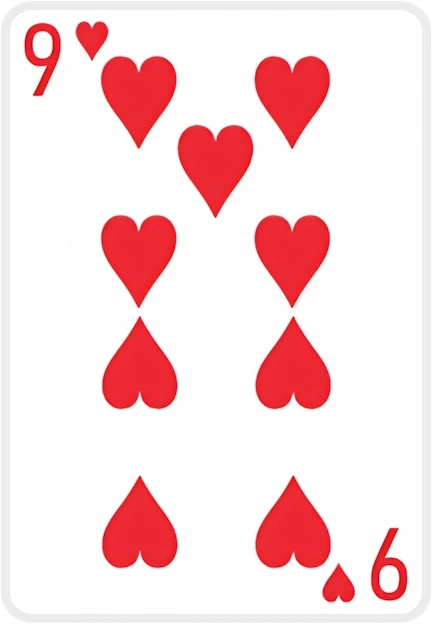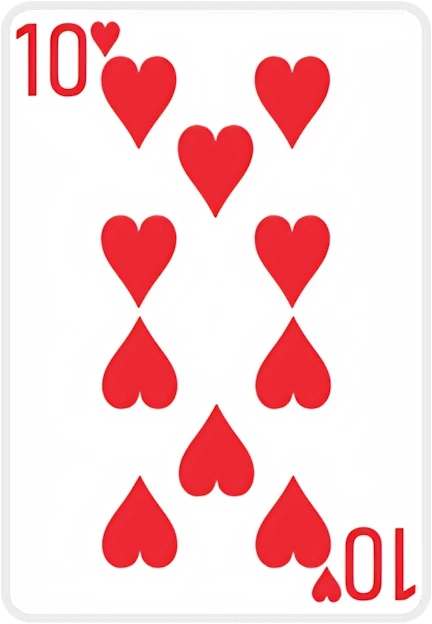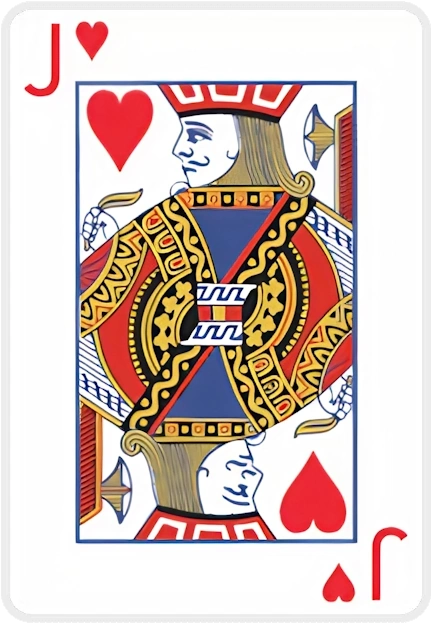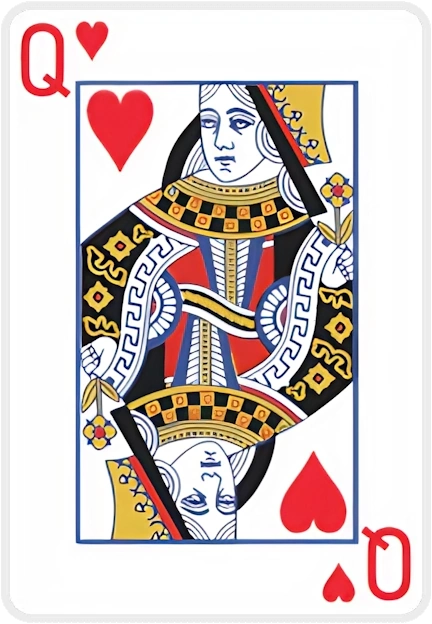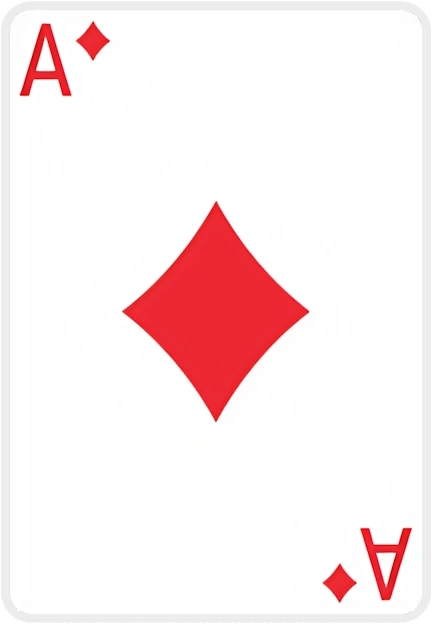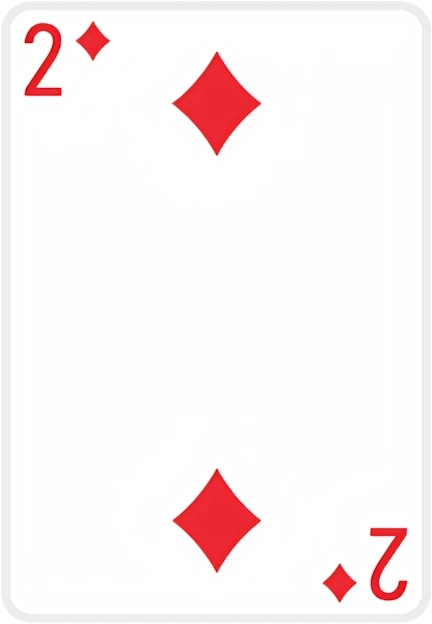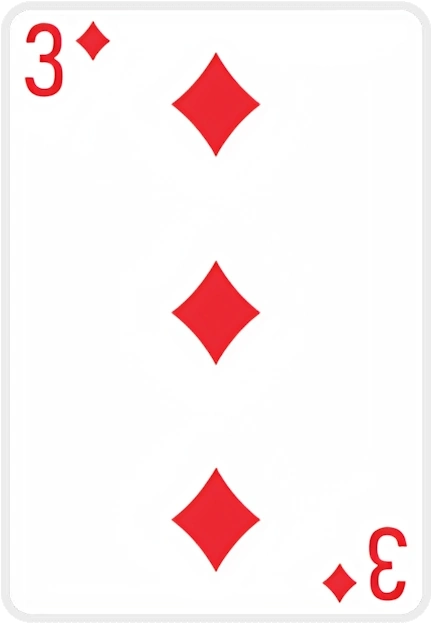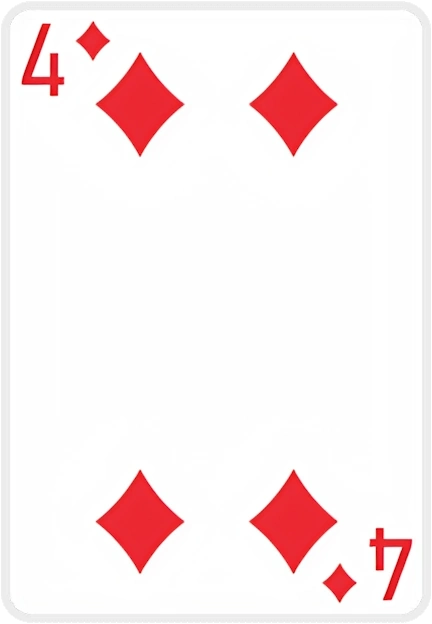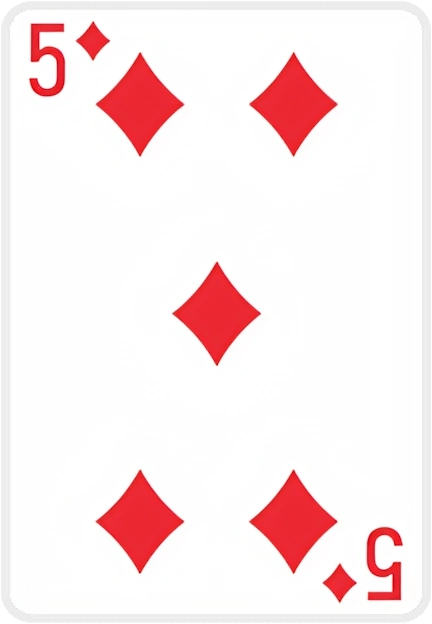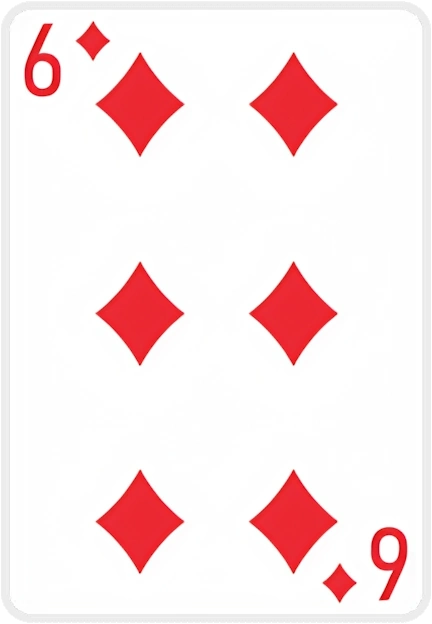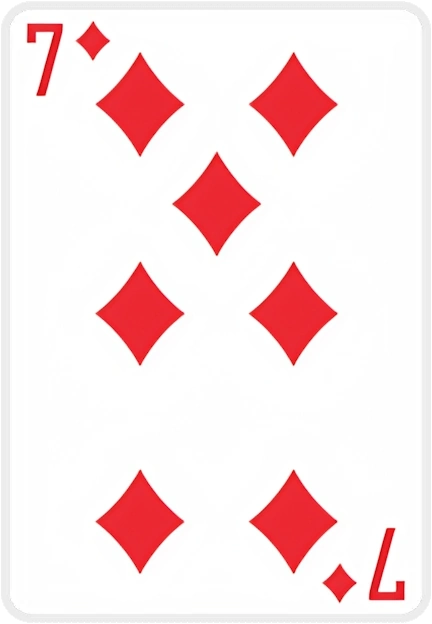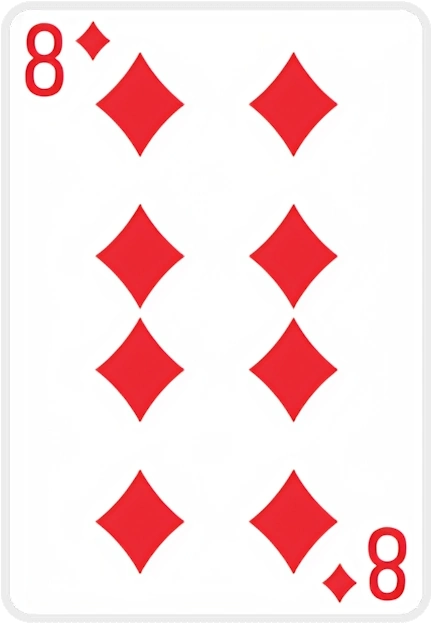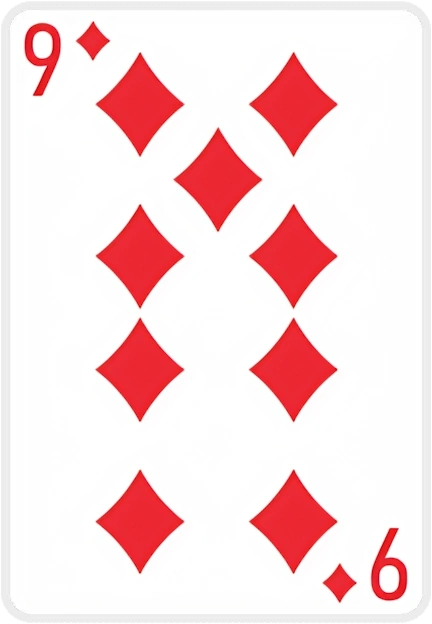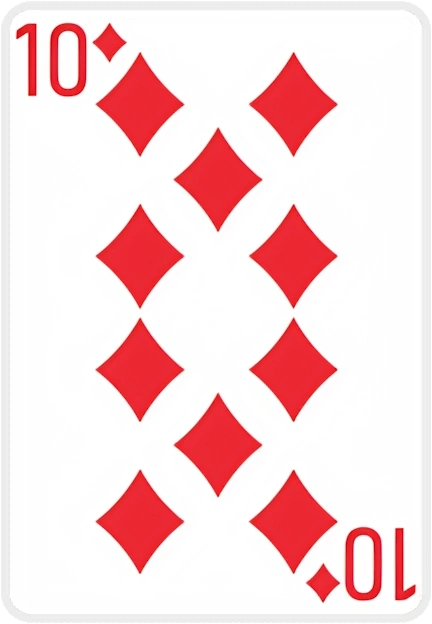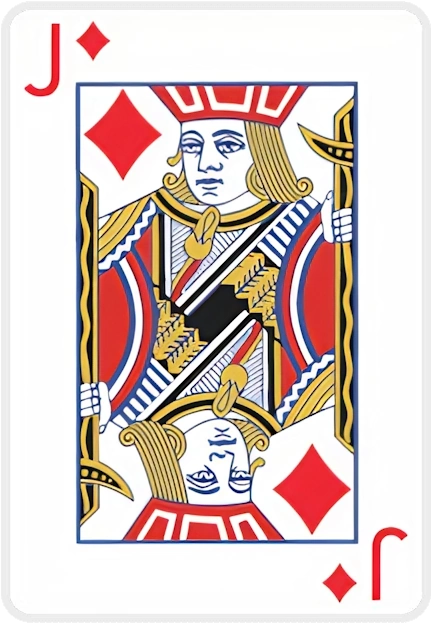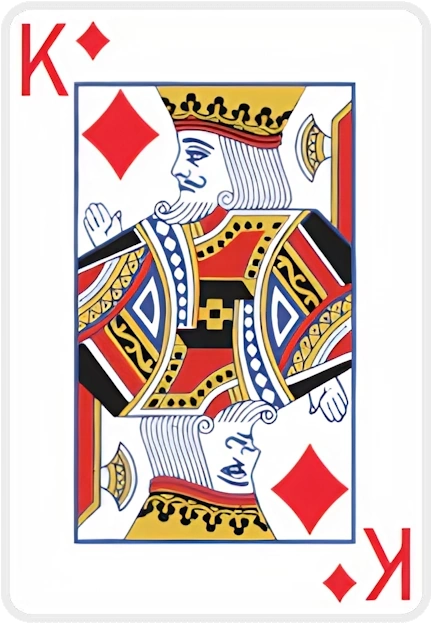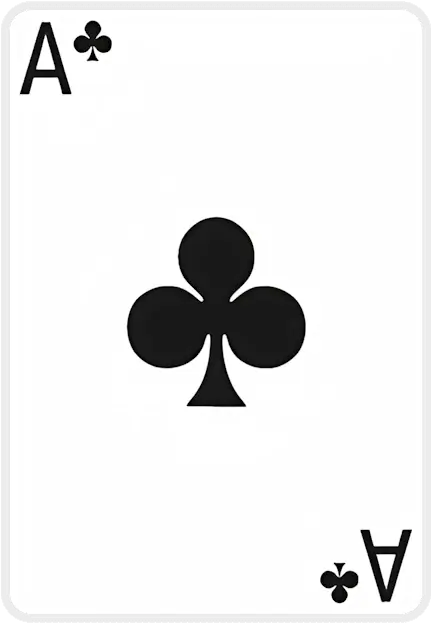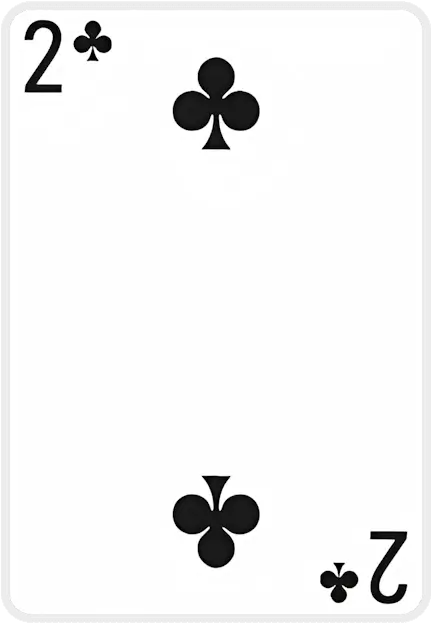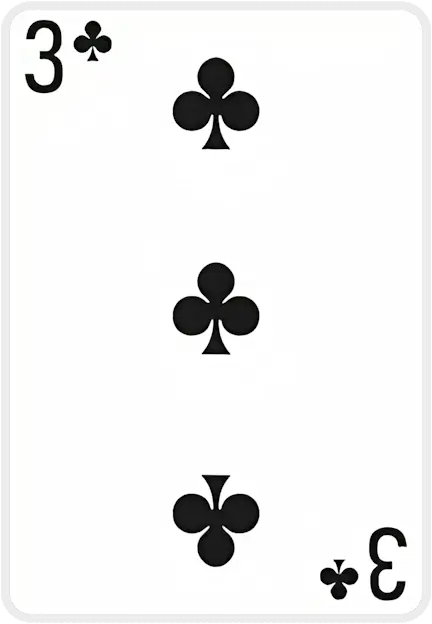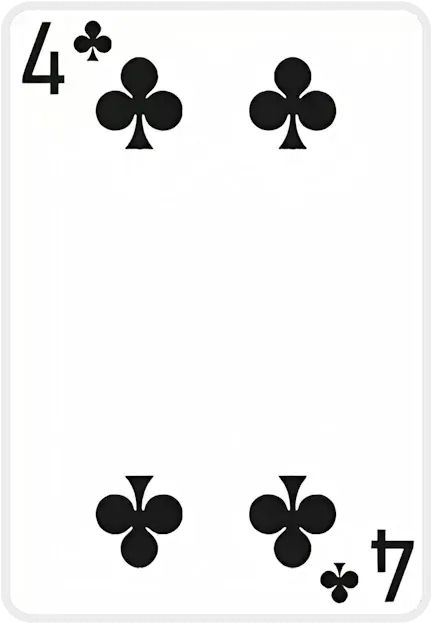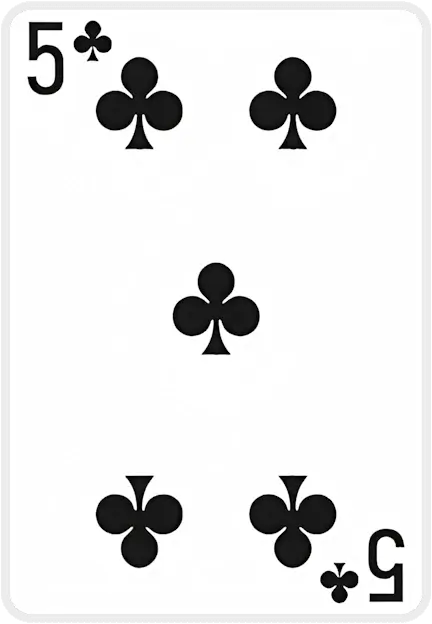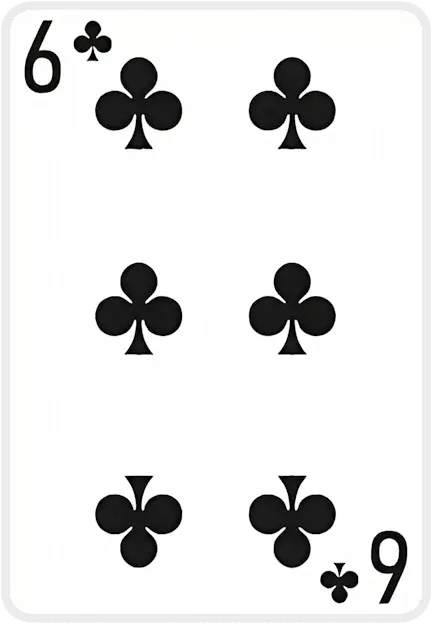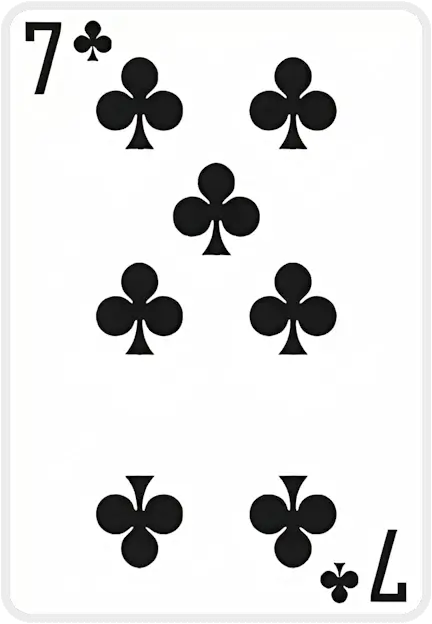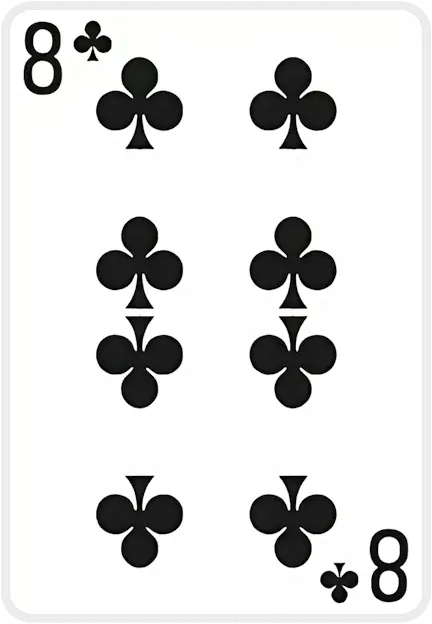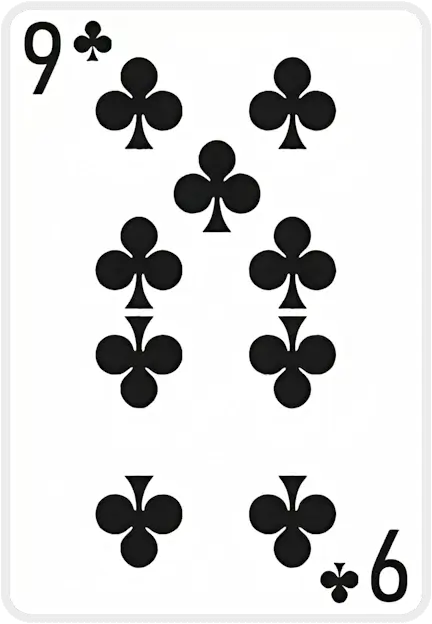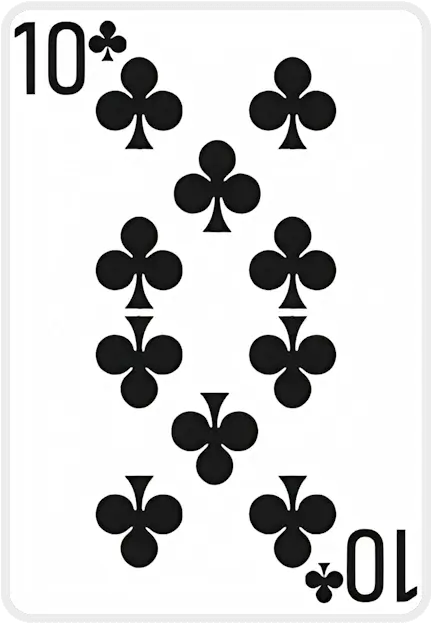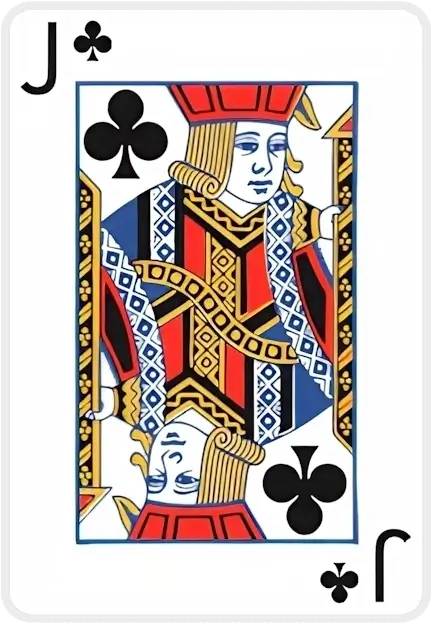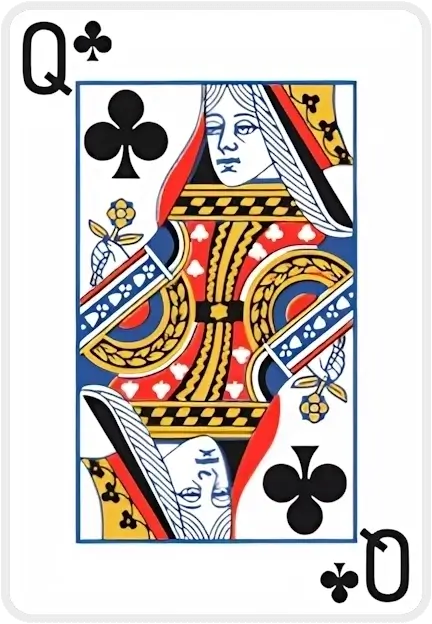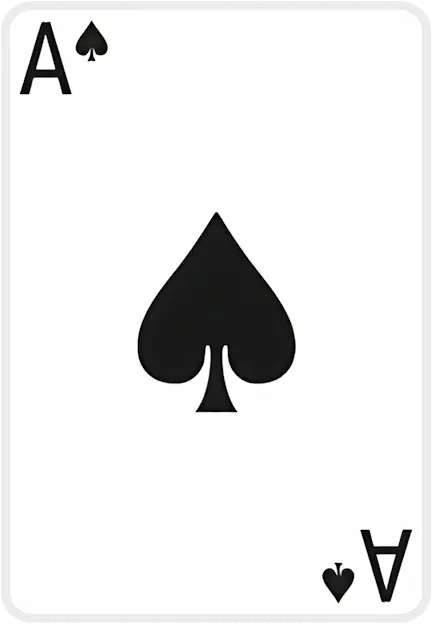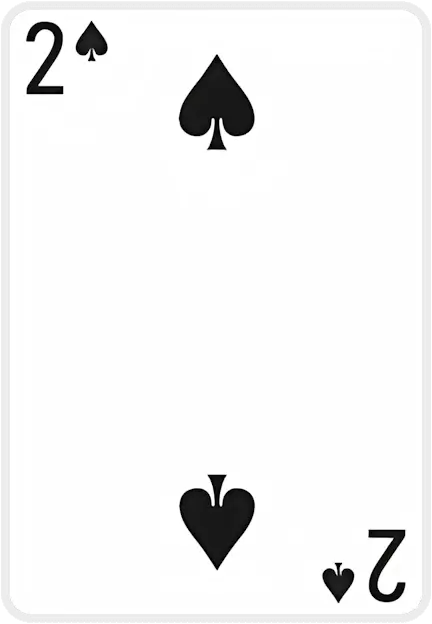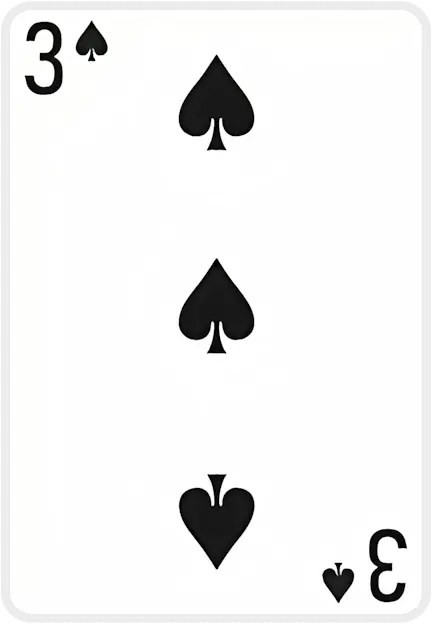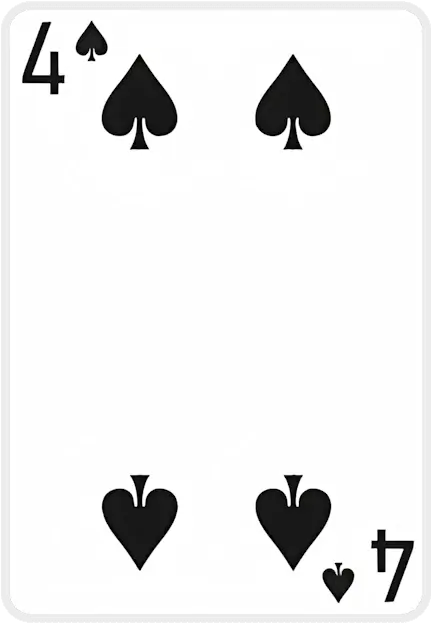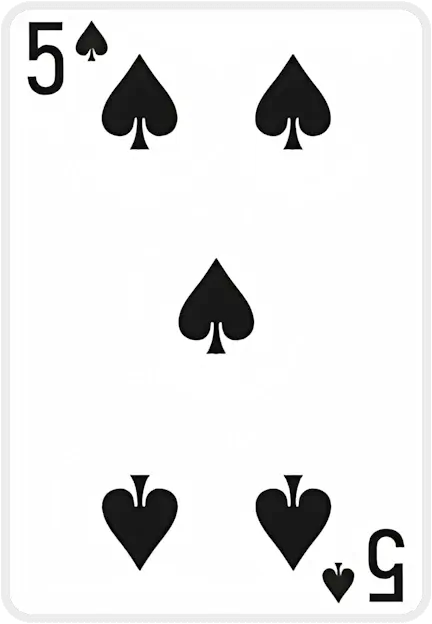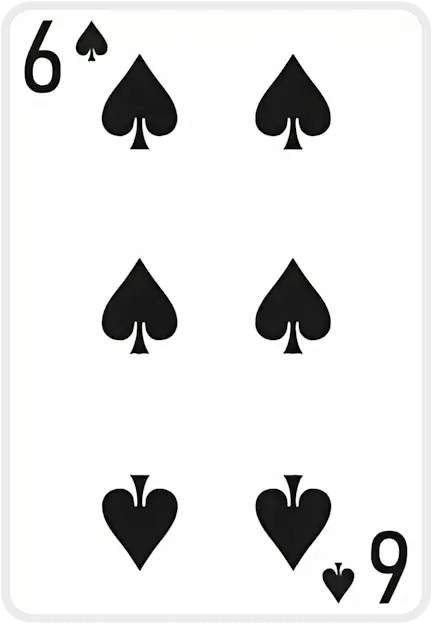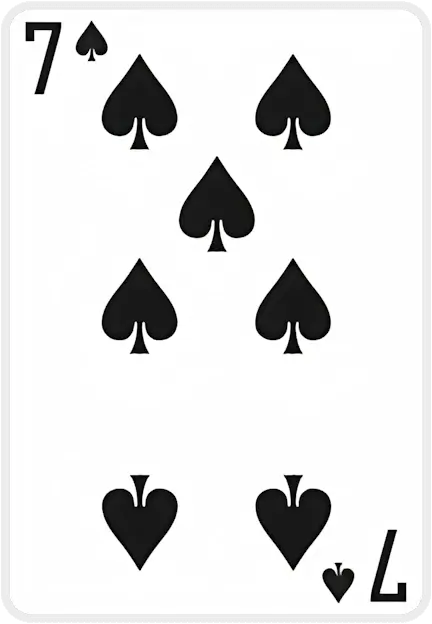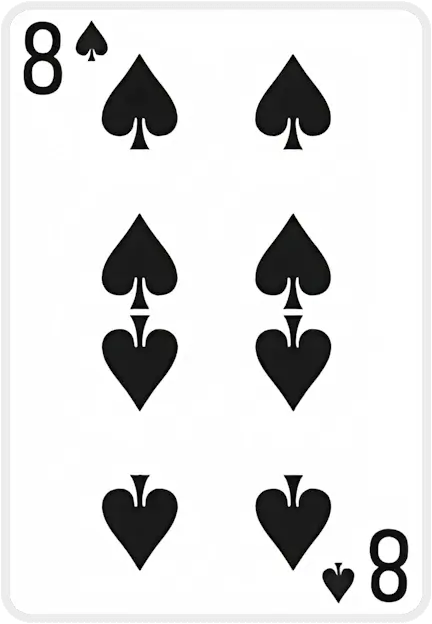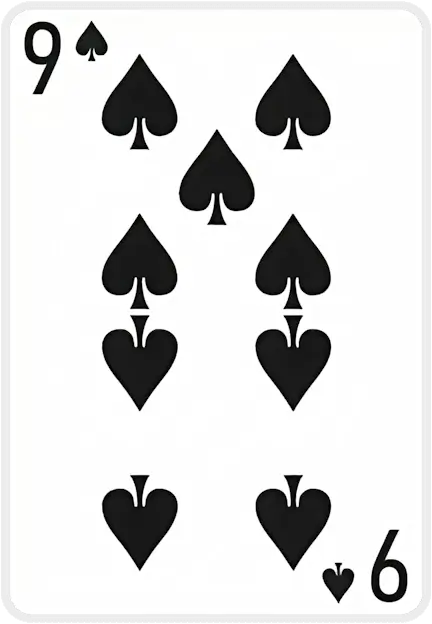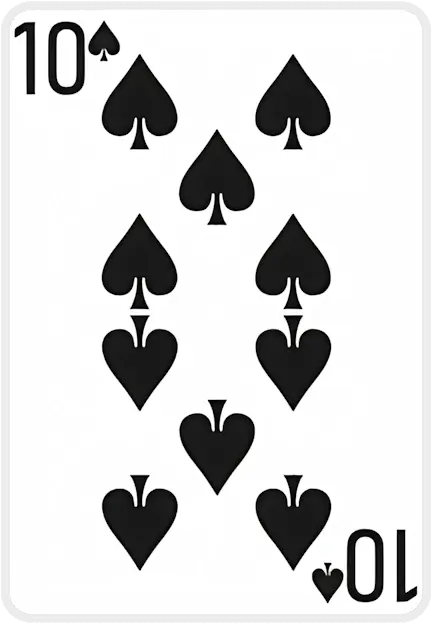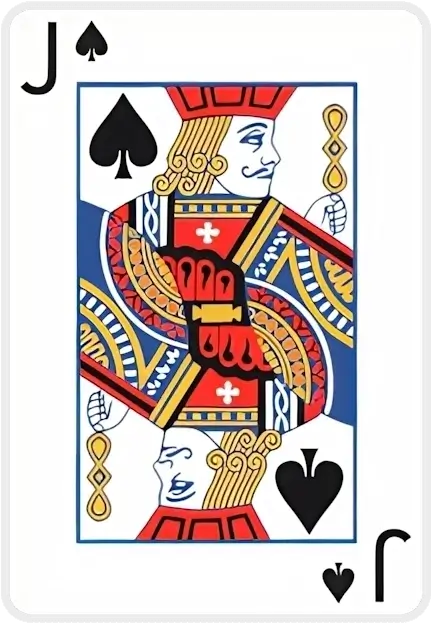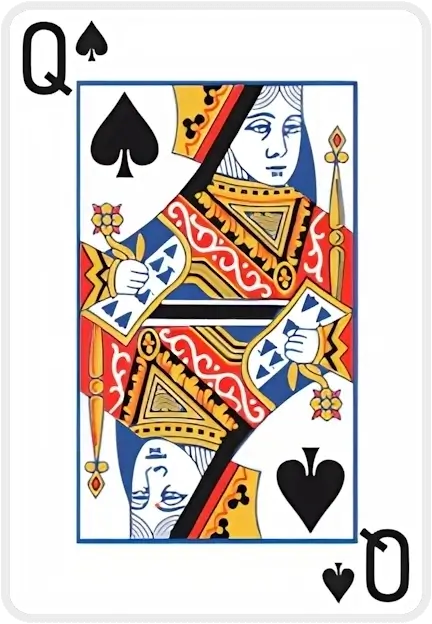Cannot drop, your card needs to be of an opposite suit colour
Cannot drop, your card needs to be one rank lower
Cannot move multiple cards to foundation
Card suit doesn't match foundation pile suit
Card can only be dropped on top of a card pile
Cannot deal cards when there are empty tableau piles
You can only move {0} card(s) at a time based on the current free cells and tableau
The cards don't add up to 13 and cannot be moved
The card is inaccessible and move cannot be performed
Cards must be in sequential order (one higher or lower)
Bristol Solitaire
Bristol Solitaire – Play Online for Free at SolitaireX.io
Bristol Solitaire is a classic single-deck card game in the Patience family (solitaire card games) known for its unique layout and high win rate. This lesser-known gem is played with a standard 52-card deck and belongs to the fan-type solitaire group (similar in style to La Belle Lucie). It’s one of the easiest solitaire games to win, thanks to an unusual rule that allows building sequences regardless of suit on both the tableau and the foundations. Invented around 1950 by renowned card game authors Albert H. Morehead and Geoffrey Mott-Smith, Bristol Solitaire has stood the test of time as an enjoyable and strategic patience game. Best of all, you can play Bristol Solitaire online for free on SolitaireX.io – no download or registration required. (Bristol Solitaire is part of SolitaireX.io’s free Solitaire games collection, where you can discover many other fun card games.)
How to Play Bristol Solitaire (Rules & Gameplay)
Objective: The goal of Bristol Solitaire is to move all 52 cards onto the four foundation piles, building each from Ace up to King. You win when every card has been transferred to the foundations.
Initial Setup & Layout: The game begins with 8 tableau piles (often called “fans”) laid out, each containing 3 face-up cards (for a total of 24 cards on the tableau). During the deal, if any King is not already at the bottom of its pile, it is moved to the bottom position. Below the tableau, 3 reserve piles are set up by dealing one card to each (these are like temporary holding cells for cards from the stock). The remaining cards form the stock pile, which will be used to continue play once no more moves are available on the initial layout.
Gameplay Rules: You may only move one card at a time, always using the top card of any tableau or reserve pile as the movable card. On the tableau piles, cards are built down in descending rank (King to Ace) and regardless of suit. This means you can place any lower-ranked card on a higher-ranked card without worrying about matching suits. For example, a 7♣ or 7♥ can be placed on an 8♦ or 8♠ – suit doesn’t matter in the tableau sequence. Whenever an Ace becomes available (on top of a pile), you should move it to start a foundation. Foundations are built up from Ace to King, and in the original rules of Bristol, this, too, can be done regardless of suit (a distinctive feature of this game). In practice, this allows great flexibility – you might have a foundation sequence like Ace♣, 2♥, 3♠, 4♦, and so on. (Some modern versions instead prefer building foundations by suit, but the classic rule is that suit doesn’t matter on foundations either.)
Only the top card of each pile is playable. If moving a card exposes a new top card in a tableau or reserve pile, that newly uncovered card becomes available for play. You can play cards either onto a foundation or onto another tableau pile if it follows the descending sequence rule. Empty tableau piles cannot be filled with new cards once cleared – in Bristol Solitaire, once a pile is empty, it stays empty for the rest of the game. (This is why Kings were moved to bottom during the deal – to avoid creating empty piles immediately, since a King cannot be placed on any other rank.)
Using the Stock & Reserve: After making all available moves with the initial cards, you will turn to the stock to proceed. Cards from the stock are dealt in groups of three – one card to each of the three reserve piles. This means you effectively have three "waste" piles where new cards appear. You can then move the top card of any reserve pile to either a foundation or a tableau if it fits the required sequence. If a reserve pile becomes empty, it will remain empty until the next batch of three cards is dealt from the stock. Continue dealing three at a time from the stock whenever you run out of moves, and use those new cards to keep building on the tableau and foundations. Note: There is no redeal in Bristol Solitaire. Once the stock is exhausted (all cards have been dealt out to the reserves), you must play with whatever moves remain. Plan carefully to make the most of the one pass through the stock.
Foundation Building: Ultimately, you want to move cards onto the foundations whenever possible, since that’s how you get closer to winning. Foundations start with Aces and build upward to Kings. Because suit order doesn’t need to be followed (in the original rules), any 2 can be placed on an Ace, any 3 on a 2, and so forth up to King. You will have up to four foundation piles (one for each Ace). By the end of a successful game, all four foundations will each contain a complete sequence of thirteen cards (Ace through King). The game is won when all cards are in the foundation piles.
Quick Rules Summary
- Deck: 52 cards (single deck). Initial layout has 8 tableau piles of 3 cards each (24 cards total). 3 reserve piles each get 1 card; the rest go to stock.
- Goal: Move all cards to 4 foundations (Ace → King). Original rule: sequences can be built without regard to suit.
- Tableau Play: Build down in rank (K → Q → J ... → A) on tableau piles, any suit allowed. Only one card can be moved at a time.
- Foundations: Build up in rank (A → 2 → 3 ... → K). Classic rules allow mixed suits on foundations.
- Moves: Only the top card of any tableau or reserve pile is available to move. An empty tableau pile cannot be filled with new cards (it stays empty).
- Stock/Reserve: When no moves, deal 3 cards from stock (one to each reserve pile). No redeals – use stock wisely.
- Victory: Win by transferring all 52 cards onto the foundations!
History of the Game
Bristol Solitaire may not be as old as classics like Klondike or Spider; in fact, it originated around 1950 in the United States. It was invented by Albert H. Morehead and Geoffrey Mott-Smith, a pair of famous card game experts who authored numerous books on solitaire and card play. The game was likely first published in one of their mid-20th-century solitaire collections. The name "Bristol" doesn’t correspond to a known historical event or a well-documented origin story (unlike games named after places or people); it’s simply the title given by its inventors.
Despite being a well-designed and enjoyable patience game, Bristol Solitaire remained a lesser-known variant for decades. It wasn’t as widely played as Klondike (the common “Solitaire” found on Windows computers) or FreeCell. However, it gained a niche following among solitaire enthusiasts for its elegant fan-style layout and higher probability of winning. With the rise of digital solitaire collections and online gaming, Bristol Solitaire has become more accessible. Today, you can easily find and play Bristol Solitaire online (for example, on SolitaireX.io) and enjoy this once-obscure game anytime.
One reason Bristol Solitaire is notable in solitaire history is its unusual gameplay twist of allowing sequences regardless of suit. Traditional solitaire games usually require matching suits or alternating colors when building sequences. The freedom Bristol offers was a novel idea in the 1950s and likely contributed to the higher win rates observed. This rule innovation by Morehead and Mott-Smith influenced other solitaire variations and showed that tweaking rules could drastically change a game’s difficulty and appeal. Over the years, a few variants of Bristol emerged (or were documented by later authors), which we’ll discuss below, but the original Bristol remains a favorite for players who want a good chance of success without an overly complex rule set.
Tips and Tricks for Winning Bristol Solitaire
Although Bristol Solitaire is considered easier to win than many solitaire games (expert estimates put the win rate around 50–60% of games when played well), a bit of strategy can greatly improve your odds and enjoyment. Here are some tips and tricks to keep in mind while playing Bristol Solitaire online:
-
Prioritize Aces and Low Cards: As with most solitaire games, unlock the Aces as soon as possible. Whenever an Ace becomes available on a tableau or reserve pile, move it to a foundation immediately. This opens up space and allows you to start building up the foundation. Similarly, try to free 2s and 3s early so they can be played onto Aces. Getting the low cards out will accelerate your progress.
-
Make Use of the Tableau Flexibility: Because you can build down in any suit on the tableau, use that freedom to your advantage. Don’t hesitate to place a card on a tableau pile just because the suits differ – focus on the ranks. The sooner you form a descending sequence and uncover the card beneath, the better. This flexibility lets you rearrange cards more freely than in games like Klondike, so take advantage of it to expose hidden cards in each pile.
-
Empty Piles Carefully: In Bristol Solitaire, empty tableau piles stay empty. While clearing a pile can be good (it means those cards have moved to foundations), be mindful that you won’t be able to place any card there later. Each empty column effectively reduces the number of tableau piles available to maneuver cards. It’s often wise to remove cards in a way that doesn’t empty a pile until it’s necessary. If a pile does empty out, try to make sure you’ve already moved a lot of cards to foundations or that the empty space won’t hinder your remaining moves.
-
Deal the Stock Wisely: You only get one pass through the stock (no redeals), so use it smartly. Go through all possible moves on the board before dealing from the stock. When you do deal three new cards to the reserve, take a moment to examine each new card and integrate them into your gameplay one by one. It’s usually beneficial to play any available moves from the reserve piles immediately (especially if they reveal Aces or other key cards) before dealing the next batch from the stock. This ensures you don’t skip over possible moves and waste potential plays.
-
Plan for Kings: Kings are the highest rank and can’t be placed on any other card in the tableau sequence. Once a King is on top of a tableau pile, it becomes a dead end until that King itself can be moved to a foundation (which will only happen at the very end of the game). The initial deal moves all Kings to bottom positions to avoid early blockage. As you play, try not to move cards in a way that strands a King on top too early. If a King does surface, focus on clearing its entire pile if possible, or meanwhile shift attention to other piles. Eventually, you’ll want all other cards above that King out, so the King can go to foundation (when the time comes). In some variations of Bristol, players allow themselves to move a King to an empty tableau space (like in many other solitaire games), but under the standard rules you cannot fill empty spaces at all. Keep this in mind as you strategize – avoid creating an empty spot thinking you can relocate a King there (the game doesn’t permit it).
-
Stay Organized: Because suit doesn’t matter for building, you might occasionally lose track of which sequences you’ve started on the tableau or foundation. Try to keep an eye on each foundation’s top card, and remember that eventually each foundation needs to have one of each rank Ace through King. If you have multiple choices for a move (for example, you can play a 5♠ either on a 6♥ in one pile or a 6♣ in another), think ahead. Perhaps one move will free an important card beneath the 6, or one foundation might be lagging behind and could use that 5. There’s a bit of planning involved to maximize your success.
By following these tips and practicing, you’ll find yourself winning Bristol Solitaire more consistently. The game’s relatively high win probability means that skillful play is usually rewarded with a victory, making it a satisfying solitaire to master.
Variations and Similar Games
Like many popular solitaire games, Bristol has inspired a couple of variations and is related to other solitaire types:
-
Belvedere: This is a well-known variant of Bristol Solitaire. Belvedere is played almost exactly the same as Bristol, with one key difference: before the game starts, remove one Ace from the deck and place it directly to start a foundation. In other words, you begin the game with one foundation already set up (Ace on foundation), which can make the game slightly easier since you have a head start. Aside from that initial setup change, all other rules follow the Bristol format (deal out eight piles of three, etc.). Belvedere gives you a small boost by guaranteeing an Ace is out immediately. Some players enjoy this variant for an even higher win rate or a quicker start.
-
Alternate Tableau Rules: Over the years, some players and software implementations have introduced house rules to make Bristol Solitaire more forgiving. One common tweak is allowing a King to be moved to an empty tableau pile. In the original rules, no card can fill an empty spot, but if you permit Kings on empties, it provides an extra move that can prevent stalls. This house rule aligns Bristol more with traditional fan games like La Belle Lucie (which often allow moving Kings to empty spaces as a final maneuver). If you play Bristol Solitaire on different apps or websites, you might encounter this rule variation. Always check the rules section of the game to see if empty piles can be filled by Kings or not.
-
New York Solitaire: New York is another solitaire game listed as similar to Bristol. It uses a comparable layout and mechanics. If you enjoy Bristol, you might want to try New York Solitaire for a slightly different challenge with a familiar feel (the specifics of New York’s rules might vary, but it generally falls in the same family of “fan” solitaire games with reserve piles).
-
La Belle Lucie & Fan Family: As mentioned, Bristol Solitaire is part of the fan solitaire family. The classic fan game is La Belle Lucie, which deals the entire deck into many small piles or “fans” (usually all cards are dealt out at once, in piles of three). La Belle Lucie is more challenging, typically not allowing any redeals or stock, and only a few special moves. Bristol can be seen as a more structured version with the addition of reserve piles and a stock deal mechanism, giving the player more control and a better chance to win. Fans of Bristol might explore other fan-type games such as Trefoil, Three Shuffles and a Draw, or Resolute – each has its own twist but shares the idea of starting with all cards dealt in small piles.
Interesting fact: Because Bristol Solitaire lets you build regardless of suit, the endgame foundation piles won’t necessarily be uniform in suit. This is unusual – most solitaire games, like Klondike or Spider, require organizing cards by suit by the end. In Bristol, the reward is simply getting all cards out, even if the foundations look mixed. The freedom in play is part of what makes Bristol Solitaire refreshingly different and enjoyable for players who might be frustrated by stricter solitaire games.
Play Bristol Solitaire Now: Ready to give this fun and easy-to-win game a try? You can play Bristol Solitaire online at SolitaireX.io in your browser. The game on SolitaireX.io follows the classic rules described above, offering a smooth and user-friendly experience. Whether you’re a solitaire veteran or new to card games, Bristol Solitaire offers a perfect balance of challenge and reward. Play for free and see if you can win this historic patience game. Enjoy and good luck stacking those cards from Ace to King!
Case Studies
All figures below come directly from our database. Using first-party data ensures every insight is evidence-based, up-to-date, and privacy-respectful.
| Game Tier | Stand-out Titles | Win Rate |
|---|---|---|
| Quick Wins | Spider (1 Suit), Hole-in-One, TriPeaks | 70–84% |
| Fair Challenges | Solitaire (Draw 1) – 913 k plays FreeCell, Golf |
45–63% |
| Expert-Level | Spider (4 Suits), Forty Thieves, Double Scorpion | ≤11% |
Curious which moves turn the odds in your favor? Explore all the data & strategies →
What people say about us
Interview with Beverley Walker-Daury
At 87, Beverley Walker-Daury shares how SolitaireX brings joy, companionship, and purpose to her days in a retirement home.
Player Interview: Poul Andersen
Poul Andersen shares how playing SolitaireX helps him keep his brain sharp and active.
Player Interview: Peter Gross
Peter Gross, 81, shares how SolitaireX became his go-to place for relaxing Freecell games and friendly competition.
Player Spotlight: St0Sh0’s Record-Breaking Runs on SolitaireX
We sit down with speed-solitaire sensation St0Sh0 to talk record times, favorite variants, and why SolitaireX is his go-to card-game hub.
Fresh from the SolitaireX Blog

Decks & Destinations: The Solitaire Traveler Series Part 5: Berlin — Strategy & Culture Walks
Berlin’s rhythm of reflection and structure pairs perfectly with Solitaire’s calm logic. This guide invites travelers to explore the city’s culture and canals with a few mindful moves between each stop.

Decks & Destinations: The Solitaire Traveler Series Part 4: Tokyo – Mindful Play in a Fast City
Tokyo’s fast pace hides countless moments of calm — perfect for a mindful round of Solitaire. This traveler’s guide pairs iconic spots with short, focused play sessions to restore clarity on the go.

Decks & Destinations: The Solitaire Traveler Series Part 3: Seattle — The PC-Era Vibe
Seattle’s rain-washed calm pairs perfectly with Solitaire’s quiet focus. This traveler’s guide shows how to blend sightseeing, coffee breaks, and short, finite puzzles into a mindful PC-era rhythm.

Decks & Destinations: The Solitaire Traveler Series Part 2: London – From “Patience” to Presence
London’s slower moments pair perfectly with Solitaire—once known locally as “Patience.” This traveler’s guide blends calm city rhythms with mindful card play to help you recharge between adventures.
Latest guides crafted by Stoyan Shopov and Kalin Nikolov
Golf Solitaire Mastery: Strategy, Stats & Flow
Deal 7 columns of 5 face‑up cards (35 total). The remaining 17 cards*form the stock; flip the first stock card to start the waste. You may move only exposed tableau cards, and only if the rank is exactly one higher or lower than the waste top. Suits don’t matter. When no move exists, flip a new waste card. Clear all tableau cards to win.
TriPeaks Solitaire Mastery: Strategy & Analytics
Two peaks are dust; one stubborn ridge remains. Your waste shows a 9. The tableau flashes 10‑J‑10‑9‑8 like a heartbeat. You nudge the 10, feel the cadence lock in, and—without overthinking—trace a neat descent that crumbles the last peak. That tiny spark of *flow* is why TriPeaks hooks serious players: rhythm, restraint, and the rush of a run that arrives exactly on time.
Pyramid Solitaire Mastery: Strategy, Stats & Joy
Picture the pyramid down to its last stubborn tier: a Queen pinned beneath a ridge, a lone Ace on the waste, and a King begging to be burned for tempo. Heartbeat, breath, click—then the whole structure yields in a rush. If you’ve hit that razor‑edge finale, you already know Pyramid’s secret: small decisions, made in the right order, change everything.
FreeCell Solitaire Mastery: Strategy & Analytics Guide
I have a 15 years personal, lived experience—picture a scene built from thousands of session logs and notes from serious players: It’s late, and the board looks jammed. You clear a single column, free one cell, and suddenly a 9♣‑8♦‑7♣‑6♦ chain glides into place, untying the knot you stared at for ten minutes. The rush isn’t luck—it’s the quiet pleasure of a plan snapping into focus. When did FreeCell last feel less like “killing time” and more like practicing a craft you can actually master?
Media About Us
0









